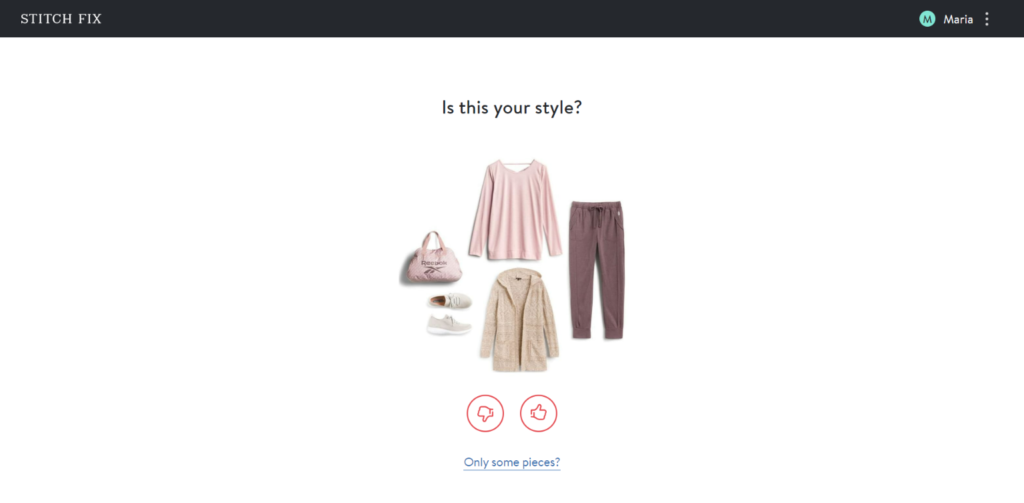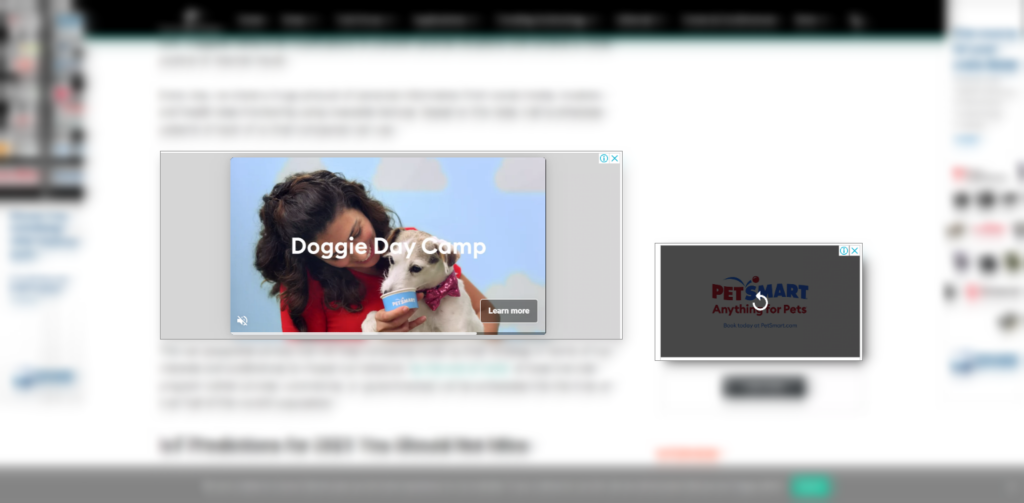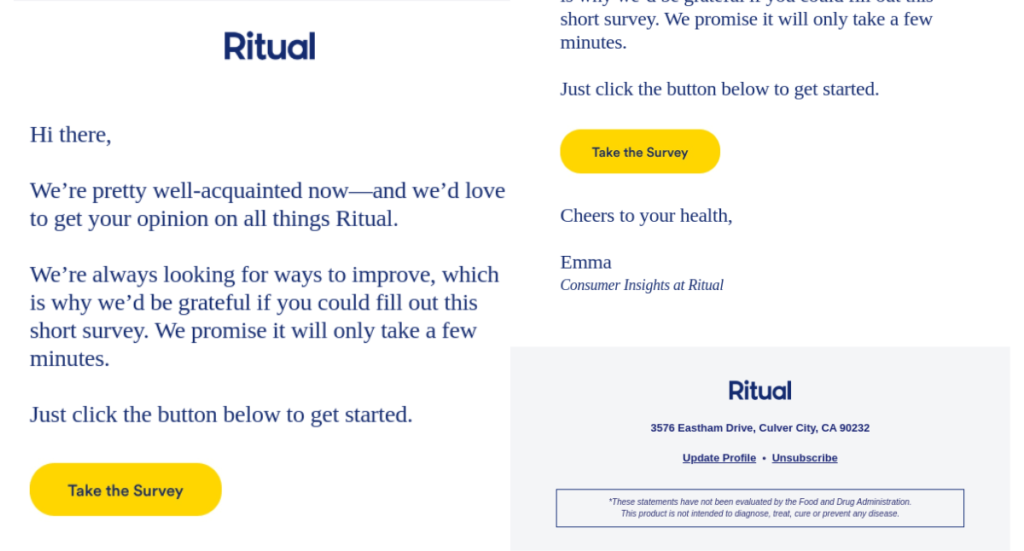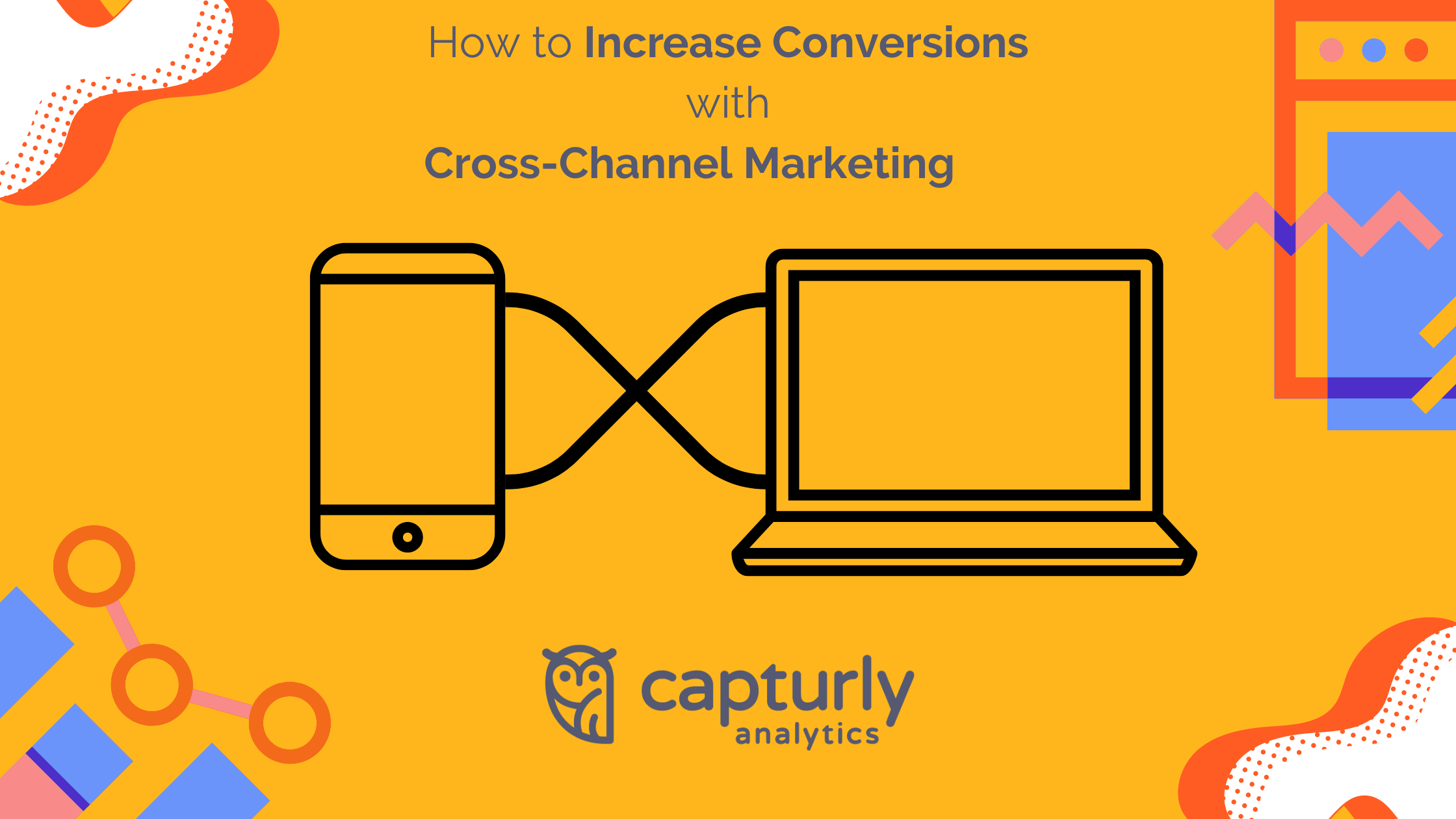How do you spread the news about the company and the items or services it offers? That’s what your marketing should do. But effective online marketing should achieve much more. For example, it has to provide insights into better customer experience, sustain a positive brand reputation, and generate the conversions that matter to your business.
Marketing should also result in higher customer satisfaction and loyalty. And loyal customers spread positive word of mouth, driving more prospects to the store.
There are more channels for brand interaction available to consumers nowadays. As the number of devices increases, companies need to ensure a smooth transition between them, unify customer data, and recognize people regardless of the used medium.

Is there any solution to handle numerous touchpoints? Leverage cross-channel marketing to maximize the success of your campaigns. This article will introduce you to the concept of cross-channel marketing, its benefits, and its drawbacks.
Table of Contents
Cross-Channel Marketing: What Is It and How Does It Work?
Business success depends on various factors. Does the website load fast enough? Do emails engage subscribers and encourage them to click on links? One of the reasons the website fails to convert is the inability to cope with growing user demands.
It remains a hot topic for eCommerce, web developments, SaaS, and other spheres. Take online stores as an example.
eCommerce websites require continuous management and keeping up with recent trends. Why? Because an outdated solution will lack the needed features, support from developers, and security patches.
In fact, these are reasons to migrate to Magento 2 if the website operates on Magento 1. And savvy retailers constantly monitor and upgrade their resources.
Another way to ensure a cohesive experience is cross-channel marketing. It’s a set of activities to reach out to your clients across different channels. It involves promoting the brand, but on a deeper level than usual.
What Does Cross-Channel Marketing Rely On?
The first criterion for successful cross-channel marketing is the online presence on several touchpoints. For example, you can make the most out of website visitors by showing relevant ads in search or social media. Other channels cover webinars, TV ads, banners, live chats, etc. Everything where you can interact with the audience and market the brand.
Another factor to consider in cross-channel marketing is the customer’s place in the sales funnel. It means you don’t just show ads or send emails to prospects. You should understand what they’ve already seen, searched for, or bought to become more customer-centric. Let’s specify the difference between cross-channel and multi-channel marketing.
Cross-Channel vs. Multi-Channel Marketing
Multi-channel marketing is also about leveraging several points of contact. While you can remain consistent and recognizable, it doesn’t involve understanding prospects’ desires.
A case in point is a search for email automation software. Suppose someone types such a request and sees your link. Potential customers may visit your website and read some posts, but leave without converting.
You can show an ad on Instagram with your services in a week. Let it be a guide on welcome emails. Then you display the same ad on another website, such as Forbes. This tactic may bring benefits if you haven’t tried anything before. Such ads increase brand awareness, provide value to prospects (a free guide), and attract visitors to the website.
But there are not so many chances viewers will respond to these ads if you don’t tailor offers to their needs. That’s where cross-channel marketing comes to your aid. It revolves around using the previous experience for future interactions.
Let’s come back to the case of email automation software. Instead of showing random offers, connect the channels to transmit information between each other.
If the visitor searches for B2B eCommerce email automation software, advertise your platform’s capabilities for this segment. One more ad on social media may promote the opportunity to run a free trial. So these efforts nudge prospects to move further in the funnel.
The bottom line is single-channel marketing is better than nothing. A multi-channel campaign outperforms a single-channel one. And cross-channel marketing takes the campaigns to the next level compared to multi-channel.
6 Steps to Leverage Cross-Channel Marketing
Step 1: Creating a Buyer Persona
A buyer persona is a description of your potential customer. To create a persona, you need to determine what traits prospects have in common, how often they will purchase, from which devices, and for what purposes.
Where do you extract such information? Conduct thorough audience research:
- Analyze social media metrics, Google Analytics, and customer databases to focus on existing clients and segment them into groups with similar traits.
- Discover your competitors’ target audience.
- Ask customers directly through polls on the website or social media.
Below is the screenshot from Stitch Fix, an online styling service. They find perfect clothes and collect information about users from email addresses to size, height, weight, budget, and preferences.

Include the following characteristics in your buyer persona overview:
- Gender, age, education, residential region, social position, and income as socio-demographic traits.
- Goals, pain points, and values as part of one’s life philosophy.
- The client’s way of life, such as where they spend their time (both online and offline), leisure activities, and interests.
- Devices and channels people use to seek a product/service, when they’re most active online, and how frequently they buy.
- Who’s responsible for the buying decision, what factors impact it, and why do they prefer a particular seller over others?
- The target audience you want to attract.
Step 2: Leveraging Platforms to Organize Your Data
Having the information mentioned above is beneficial to a business. But these data will bring value if it’s unified. Scattered information leads to lags in delivering a polished customer experience. Your team should quickly achieve various details on demand.
Let’s assume clients inquire about the order status. A customer support specialist needs to ask for their name, order number, and others. It requires people to repeat themselves even though these facts are already present in a database. That’s why you need to have data in one place.
Software like CDPs facilitates this process. They are essential for cross-marketing campaigns because they can collect first-party data for a complete customer view.
“CDP” is an abbreviation for customer data platform. It’s a successor to CRM (customer relationship management) and customer support systems. But these tools generally exist in isolation without transferring data with other software, such as email, analytics, websites, etc.
A CDP is a single database for disintegrated channels for tracking customer interactions. It stores behavioral, transactional, and demographic history for your teams to operate in a shared environment. Some examples of CDPs include Segment, Bloomreach Engagement, Optimove, etc.
Check the Segment interface in the screenshot below. The system allows you to choose the data source to gather information and destinations to transfer it to the needed apps.

According to Statista 2020 survey, 45% of businesses increased sales thanks to a CDP. 44% of respondents also noticed some enhancements in sales.
Step 3: Reminding About the Brand Through Retargeting
Suppose visitors viewed certain pages on your website but didn’t purchase anything. It’s a widespread issue since the average conversion rate for landing pages across different industries is 2.35%. How can you persuade that 97.65% of potential customers to return to your company?
If you utilize cookies, you can track website activities to leverage them in future campaigns. Cookies are small data chunks stored on an individual’s computer. They help you personalize customer communication to show what they will most certainly like. And the best part is that prospects don’t have to buy anything for you to have their data.
That’s what retargeting is about. It involves placing search, website, or social media ads based on previous interactions, views, and searches. For example, it may cover PPC ads on Google or Facebook ads in the feed.
Lets illustrate what I mean.
I glanced at several items on the Petsmart online store but decided to buy them later. When I open an article on another resource, I see video ads of this brand on some parts of the page.

Retargeting is crucial for cross-marketing. Why? Because you connect the dots between interaction points and reengage “warm” leads. This tactic lets you keep those viewers on the hook. Thus, they will remember your brand upon encountering these ads. You can show product images a person looked at and accompany them with texts, such as:
- “Buy this product now and get a 10% off on the next purchase”.
- “The products are back in stock. Buy them now”.
- Or compile similar copies.
How else can you stimulate customers’ willingness to buy? You can increase the conversion rate by, for example, notifying prospects about a limited quantity of certain goods in stock. But don’t overdo this tactic, as the deceit may soon be discovered. As a result, the strategy won’t work anymore, and consumers will lose their trust in your store.
Step 4: Launching Email Campaigns
Email marketing is one of the most popular customer communication methods today. The number of email users exceeded 4 billion in 2021. It will reach over 4.5 billion by the end of 2025.
Despite the popularity of social media and messengers, email marketing brings one of the best results. What are the reasons for such effectiveness? People expect to receive promotions via email as they subscribe to newsletters with a particular intent.
You can launch the following types of email marketing campaigns:
- Surveys. Like polls on websites, surveys in emails tell about your target market, demographics, and preferences. They also allow you to evaluate your business performance. Ask clients for their opinion on your goods, services, or other marketing initiatives. This information can help improve various marketing channels.

2. Click segmentation. This term denotes separating consumers into groups based on the links, buttons, or images they click. Connect email contents with different website pages. Track clicks and links with the highest interest, leading to conversion. Using subscribers’ interests assists in designing more precise email marketing.
Step 5: Focusing on Social Media
Social sites are another vital part of cross-marketing. Leverage them to convert consumers into purchasers based on the most actively used platforms, your industry, and your goals.
You may choose Facebook or LinkedIn to appeal to a professional, knowledgeable, and high-income audience. Instagram and TikTok will better work with young, active, and passionate prospects. Or, if you focus on long-format video content, you can opt for YouTube for lead generation.
Cases in point are TikTok and Instagram. These platforms also support videos and live streaming. But TikTok and Instagram formats and content drastically vary from YouTube videos. The latter is perfect for lengthy interviews and reviews, while TikTok supports dynamic videos to grab the user’s attention. The winning strategy is to combine several platforms in one SMM campaign. That’s how you can do it:
- shoot a long YouTube video and cut out the most engaging moments;
- modify them to serve as previews;
- submit it to TikTok and include a link to your YouTube channel.
As social media are all about direct communication, you can find more ways to reach out to prospects, increase loyalty, and boost brand awareness. Research where the target audience spends their free time. Pop up at the right moment to reply to comments, participate in discussions, and resolve issues.
For instance, Disco™ responds to the comments under its posts to stay connected with prospects. Here is the screenshot to prove my point below.

Employ specialized software like BuzzSumo, Sprout Social, and Hootsuite. These tools provide insights into the trending topics in your niche, assist with finding influencers, and let you plan content publishing.
Step 6: Measuring, Testing, and Optimizing
Any decision should be based on detailed information, in-depth research, and precise numbers. That and only that ensures your actions will be worthwhile and bring success.
What happens when you rely on incorrect data coupled with your subjective opinion? Misguided investments, wasted time, and lost income. It applies to every sphere, and marketing isn’t an exception. How do you know where to start?
Once cross-channel marketing strategies are in place, you need to track their effectiveness. Do visitors convert into purchasers at the desired rate? Has your company improved feedback from clients? Look into analytics to study KPIs and metrics.
Upgrade your campaigns to stay tuned with the current trends. Practice A/B testing as an option. This strategy relies on picking one element to test and tweaking it to find the most converting variant.
Let’s take a call to action (CTA) as an illustration. Although calls to action can be as short as a button text, the chosen wording, placement, and design significantly impact conversions. And that’s something marketers put high on the agenda.
Yes, you may opt for best practice color palettes, CTA placement, and phrases like “Buy now”, assuming they’ll work for your audience too. But is it possible to obtain more clicks, leads, and orders by changing things around?
In this respect, A/B testing is a helping hand. Playing with the wording, comparing several options, and actually knowing what your audience prefers can help improve the conversion rate. Take a look at the email below. Cometeer, a coffee brand, uses “Gift now” and “Try it today” as CTAs to make them more specific, rather than using generic “Visit the website” or “Order now”.

Reasons to Move to Cross-Channel Marketing
Cross-channel marketing revolves around increased personalization. It’s one of the main benefits as 71% of today’s consumers want a tailored experience. Personalization ensures people have a unique attitude in line with their stage in the funnel, interests, and expectations. As a result, you can leverage the actions of your target audience to provide contextualized content. More cross-channel marketing benefits include:
- improved client loyalty. A personalized experience encourages people to come back. It also saves time looking for new brands offering solutions that meet their interests.
- increased interactions. Valuable content leads to more interactions. Satisfied customers will follow you on social media or subscribe to a newsletter if they’re pleased with the purchase, customer service, or website blog.
- maximized sales. A tailored experience is essential for 80% of consumers deciding to buy. And if you succeed in building loyalty, happy customers will share their positive feedback with others, increasing your customer base and sales.
Conclusion
Do you focus on a single type of conversion or platform? Then you should broaden your horizon. The days when you attracted customers using just one channel are long gone. Assist buyers in discovering and engaging with your brand in as many ways as possible.
From smartphones to desktops and voice speakers, from social media to podcasts, prospects expect a seamless shopping experience. It’s especially relevant to growing companies striving to compete with industry behemoths.
What’s the basis of any marketing campaign? It’s customer data. Gather information about clients’ preferences, trends, past purchases, and complaints. These details are essential for personalizing website content, sending targeted emails, and offering relevant products.
Track marketing metrics and make the needed adjustments. And remember that it’s all about solid relationships. The more you satisfy clients, the more orders they will make and the more leads they will bring to your company.
About the Author
Kate Parish is the chief marketing officer at Onilab with over eight years of experience in Digital Marketing in the sphere of eCommerce web development. Kate always aspires to broaden her competency in line with cutting-edge global trends. Her primary areas of professional interest include SEO, branding, PPC, SMM, Magento PWA development, and online retail in general.
Don't forget, sharing is caring! :)


2 Comments
Airline Reservation System
2023-02-15 at 08:54Such an amazing post. All the thought process is converted as a beautiful blog without any hiccups in the relevance. Thank you.
Cross channel advertising
2023-04-04 at 12:54Communication is very important in each and every field. Cross channel marketing can increase the communication and help with a lot of thing. Thanks for sharing this information here.
Cross channel advertising